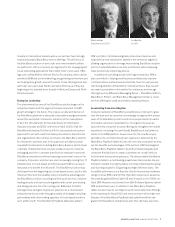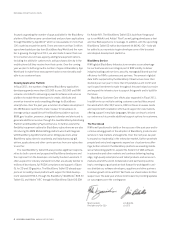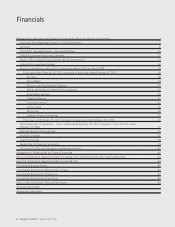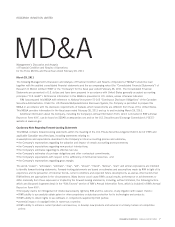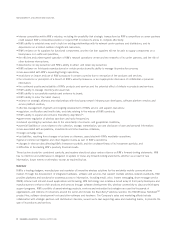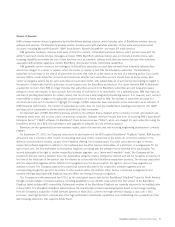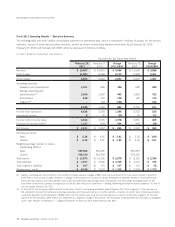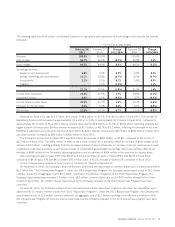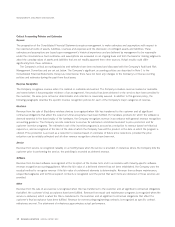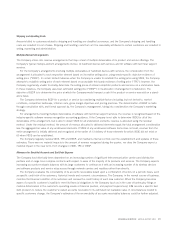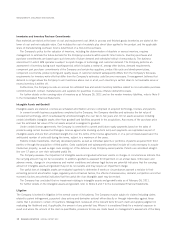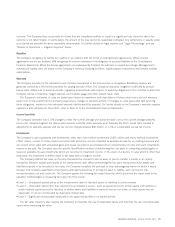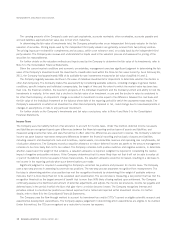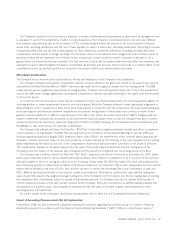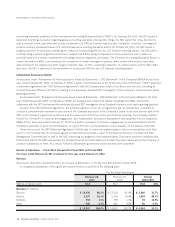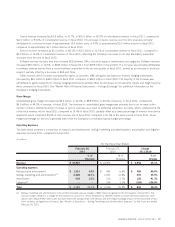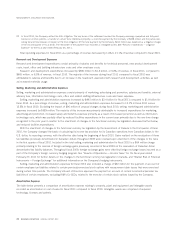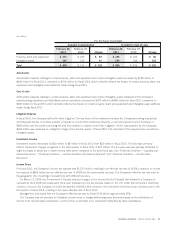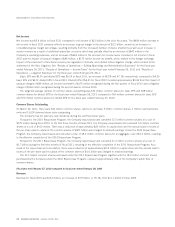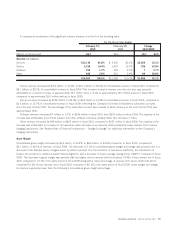Blackberry 2011 Annual Report Download - page 26
Download and view the complete annual report
Please find page 26 of the 2011 Blackberry annual report below. You can navigate through the pages in the report by either clicking on the pages listed below, or by using the keyword search tool below to find specific information within the annual report.Shipping and Handling Costs
Amounts billed to customers related to shipping and handling are classified as revenue, and the Company’s shipping and handling
costs are included in cost of sales. Shipping and handling costs that can’t be reasonably attributed to certain customers are included in
selling, marketing and administration.
Multiple-Element Arrangements
The Company enters into revenue arrangements that may consist of multiple deliverables of its product and service offerings. The
Company’s typical multiple-element arrangements involve: (i) handheld devices with services and (ii) software with technical support
services.
For the Company’s arrangements involving multiple deliverables of handheld devices with services, the consideration from the
arrangement is allocated to each respective element based on its relative selling price, using vendor-specific objective evidence of
selling price (“VSOE”). In certain limited instances when the Company is unable to establish the selling price using VSOE, the Company
attempts to establish selling price of each element based on acceptable third party evidence of selling price (“TPE”); however, the
Company is generally unable to reliably determine the selling prices of similar competitor products and services on a stand-alone basis.
In these instances, the Company uses best estimated selling price (“BESP”) in its allocation of arrangement consideration. The
objective of BESP is to determine the price at which the Company would transact a sale if the product or service was sold on a stand-
alone basis.
The Company determines BESP for a product or service by considering multiple factors including, but not limited to, market
conditions, competitive landscape, internal costs, gross margin objectives and pricing practices. The determination of BESP is made
through consultation with, and formal approval by, the Company’s management, taking into consideration the Company’s marketing
strategy.
For arrangements involving multiple deliverables of software with technical support services, the revenue is recognized based on the
industry-specific software revenue recognition accounting guidance. If the Company is not able to determine VSOE for all of the
deliverables of the arrangement, but is able to obtain VSOE for all undelivered elements, revenue is allocated using the residual
method. Under the residual method, the amount of revenue allocated to delivered elements equals the total arrangement consideration
less the aggregate fair value of any undelivered elements. If VSOE of any undelivered software items does not exist, revenue from the
entire arrangement is initially deferred and recognized at the earlier of: (i) delivery of those elements for which VSOE did not exist; or
(ii) when VSOE can be established.
The Company regularly reviews VSOE, TPE and BESP, and maintains internal controls over the establishment and updates of these
estimates. There were no material impacts to the amount of revenue recognized during the quarter, nor does the Company expect a
material impact in the near term, from changes in VSOE, TPE or BESP.
Allowance for Doubtful Accounts and Bad Debt Expense
The Company has historically been dependent on an increasing number of significant telecommunication carriers and distribution
partners and on large more complex contracts with respect to sales of the majority of its products and services. The Company expects
increasing accounts receivable balances with its large customers to continue as it sells an increasing number of its wireless devices
and software products and service relay access through network carriers and resellers rather than directly.
The Company evaluates the collectability of its accounts receivables based upon a combination of factors on a periodic basis, such
as specific credit risk of its customers, historical trends and economic circumstances. The Company, in the normal course of business,
monitors the financial condition of its customers and reviews the credit history of each new customer. When the Company becomes
aware of a specific customer’s inability to meet its financial obligations to the Company (such as in the case of bankruptcy filings or
material deterioration in the customer’s operating results or financial position, and payment experiences), RIM records a specific bad
debt provision to reduce the customer’s related accounts receivable to its estimated net realizable value. If circumstances related to
specific customers change, the Company’s estimates of the recoverability of accounts receivables balances could be further adjusted.
RESEARCH IN MOTION ANNUAL REPORT 2011 13


